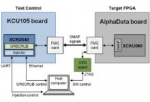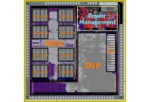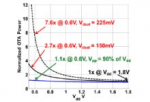D&R Industry Articles (June 2020)
Articles for the Week of June 29, 2020

Analog and Power Management Trends in ASIC and SoC Designs
The design of modern Application Specific Integrated Circuits (ASICs) and Systems on a Chip (SoCs) in advanced process nodes can be differentiated by the on-die integration of analog functions, such as power management. Vidatronic offers this white paper to give some historical background on this trend and delve specifically into the integration of power management. Vidatronic IP solutions and the benefits they bring to ASIC and SoC designers are discussed.Articles for the Week of June 22, 2020

Where Innovation Is Happening in Geolocation. Part 1: Signal Processing
At first glance, geolocation technology seems to work well. Our phones and cars get us to where we need to be with little effort and rather reliably. For consumers, it’s a free service, thanks to service providers like Google and Apple.Articles for the Week of June 15, 2020

GRSCRUB: FPGA Configuration Supervisor
The GRSCRUB is an external Field Programmable Gate Array (FPGA) configuration supervisor developed by Cobham Gaisler as an Intellectual Property (IP) core. The GRSCRUB IP features different capabilities, such as programming and scrubbing, which prevents the accumulation of errors in the configuration memory of SRAM-based FPGAs.Articles for the Week of June 8, 2020

Breaking new energy efficiency records with advanced power management platform
The free lunch offered for decades by Moore’s law is now over and scaling down to the next technology node no longer offers the required energy efficiency gains. Design teams must now pursue their gains by deploying increasingly complex power management techniques to meet the demands of the new IoT markets.- Specifying a PLL Part 1: Calculating PLL Clock Spur Requirements from ADC or DAC SFDR
- A guide to accelerating applications with just-right RISC-V custom instructions
Articles for the Week of June 1, 2020

Time-Domain Analog Design: Why and How
The widespread adoption of scaled CMOS process technologies has made battery-operated consumer devices more powerful, cheaper, and last longer. In the last two decades, CMOS technology scaling has resulted in orders of magnitude reduction in transistor sizes, from 90nm in 2004 to 7nm in 2019 and 3nm in 2024.








